Introduction
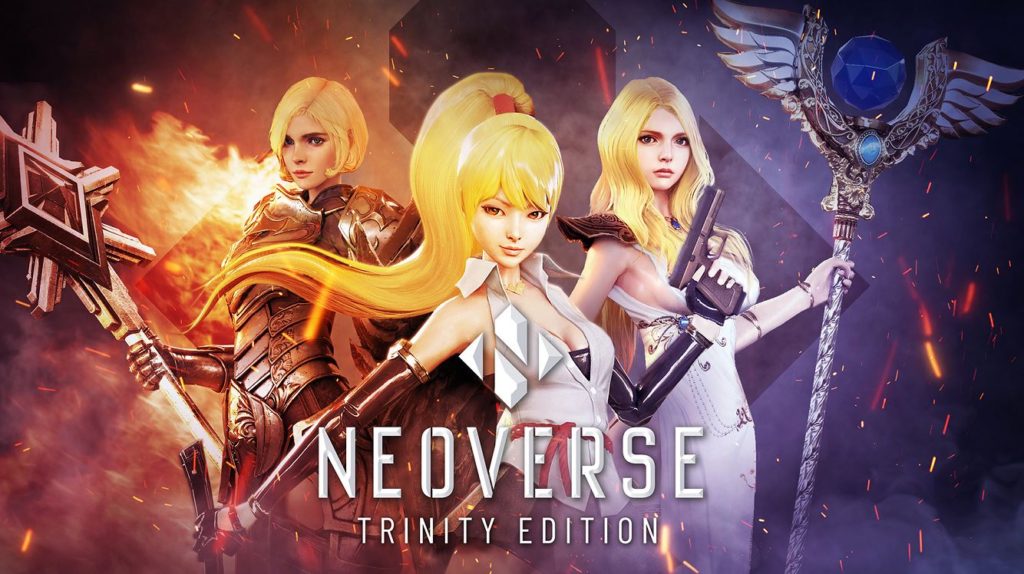
Neoverse is a rogue-lite deck building game that was first released for early access and a full launch of Steam but has now made the switch (no pun intended) to the Nintendo Switch. Neoverse Trinity Edition is developed and published by Tino Games, a South Korean developer, and is their first game. The combination of trading card game and deckbuilding mechanics from games like Hearthstone with the risk-reward aspects of a rogue-lite makes Neoverse Trinity Edition not only fun game to play with engaging gameplay, but also one that earns additional playthroughs. Neoverse Trinity Edition is an excellent game and for a low-price tag, accessible by everyone.
Presentation
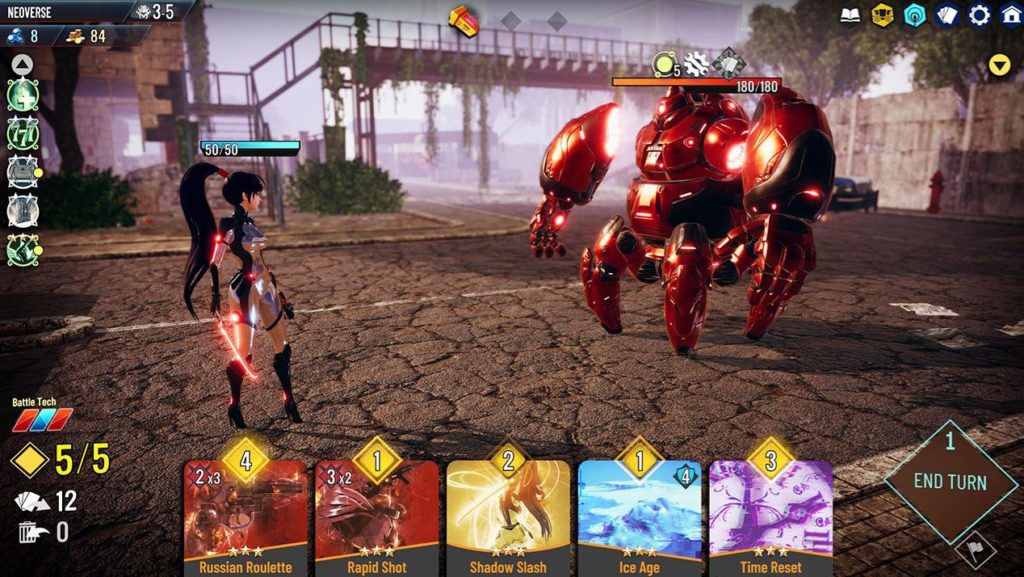
Because the version of Neoverse that is being reviewed is the Switch version, there may be some graphical and performance differences between the Switch and the PC version. However, these differences are definitely not enough to hold down this game. The in-game graphics are very beautiful and well rendered. The only nitpick I have of the graphics is how similar they feel. If you’ve played any Chinese or Korean Call of Duty clone, the art style may look very similar. However, that doesn’t take away the fact that the graphics are very clean and pretty.
The characters and enemies are done well and the UI, although confusing at first, becomes much easier to navigate once the player learns the many mechanics of the game. The performance, however, reflects both the beauty of the graphics but also the limitations of the Switch system. Cutscenes can chug with screen tearing. Some aspects of the game can appear at a lower resolution.
The controls can also reflect the fact that the Switch version is a port. The cursor moves at what feels like a sluggishly slow DPI without any way to change it. The control inputs also cannot be changed on the Joy Cons. The other settings, fortunately, are rather extensive, especially for a Switch game. There are plenty of different display and audio settings and surprisingly, a large number of languages. Ultimately, Neoverse Trinity Edition is a port of a game built for a stronger and more powerful platform; its presentation hampered by the weak processing power of the Switch. However, as I will get into, graphics is only one part of this package and what limitations exist can be easily overlooked.
Gameplay
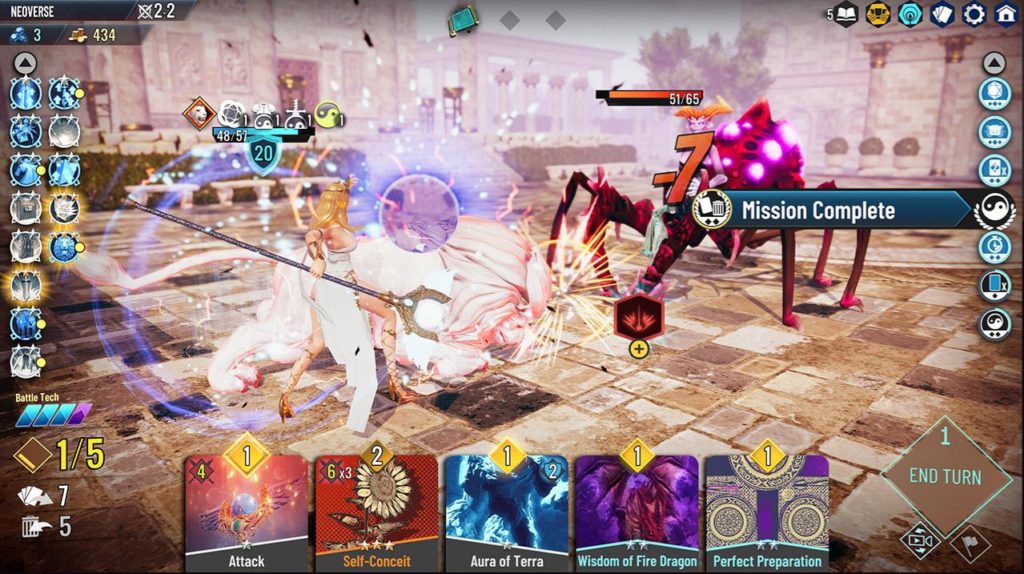
The gameplay is definitely where Neoverse Trinity Edition shines. As mentioned earlier, Neoverse is a deck builder and a rogue-lite combined into one strange but extremely fun package. Each playthrough, the player starts with a small set of starting cards unique to each character with room to grow their decks as they clear stages. After each stage, the player chooses which stage they would like to move to. A harder stage will have tougher enemies but can net greater rewards such as card upgrades, more cards, or valuable items. The goal for the player is to try and get as far as they can with the cards and skills that they acquire as they fight towards the boss. Health is carried over from each stage and can rapidly dwindle if the player isn’t careful. Each stage will reward currencies that the player can use to purchase skills or items and cards. These can be incredibly important to a playthrough’s success.
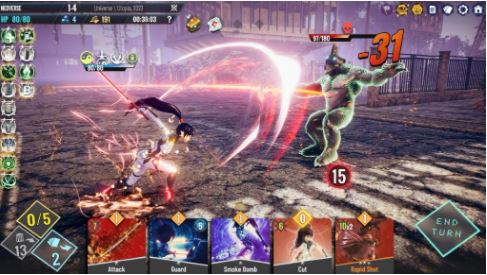
Item shops and stages are one thing but what about the raw gameplay? I am happy to report that the gameplay is not only engaging and varied, but just plain fun. Each card in a player’s hand dictates a different action that the character can do, and these actions aren’t just limited to attacking and defending. Some cards provide damage boosts and buffs to the players or debuff enemies or increase mana, so on and so forth. There is a deep, intricate gameplay loop of choosing what cards to play and how to use each card for a given scenario. Cards can be lost forever or replaced with trash filler cards the enemies can fill your hand with. Balancing the limited Mana that your character has with what each card in your hand costs will keep each draw of the deck fresh and unique.
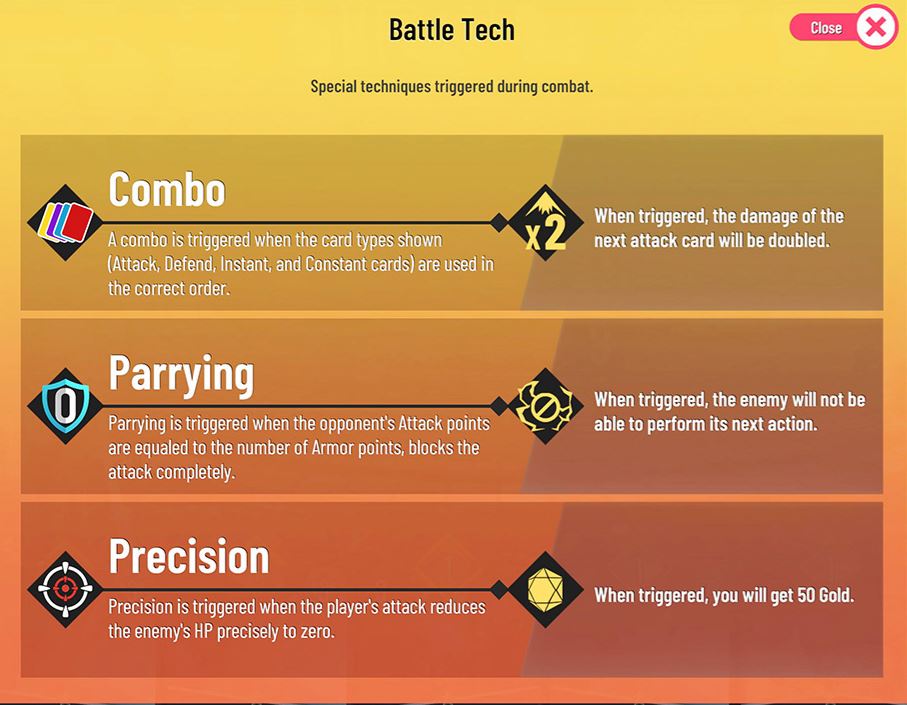
My favorite gameplay mechanic, though, in Neoverse Trinity Edition has to be the combo mechanic. On the screen, labeled “Battle Tech” will be a series of colored rectangles corresponding to the different possible cards in a hand. The goal is to try and play the exact order of cards the combo asks for to activate a devastating combo. Combo requirements change with every fulfilled or failed combo and every turn, meaning having a variety of cards in hand as well as in the deck is required to be able to consistently pull of combos. On one of my runs, I found that I was burning through too many attack cards and by Stage 4, I had basically no attack cards left. I couldn’t do anything but stack up defense but eventually the enemies were able to punch through my shields and my run was ruined. But that’s just one of the many scenarios a player can encounter. The randomness of the possible stages, the draws from the deck and combos make sure players think on their feet and adapt to every card they play.
Coming back for more
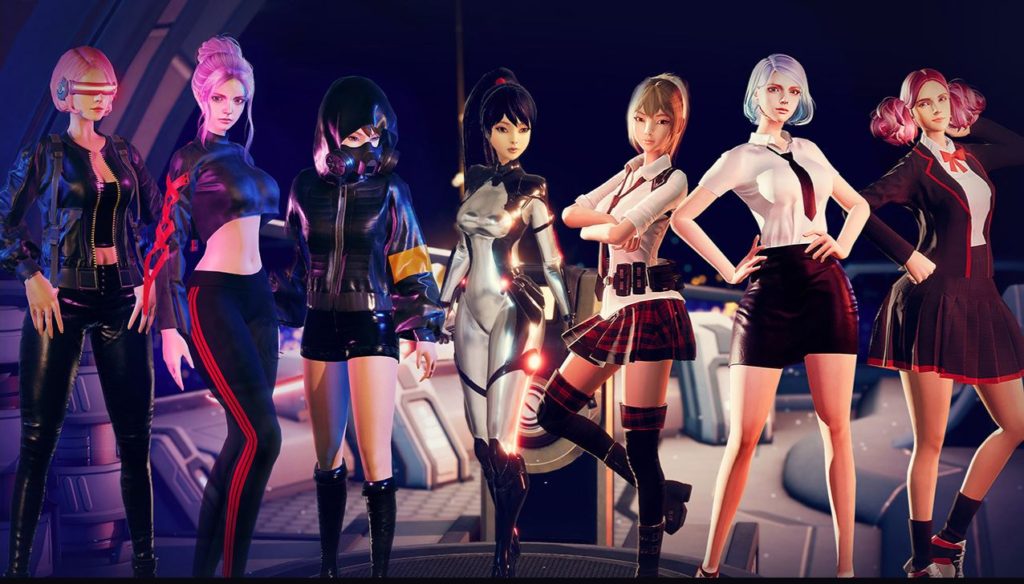
If the gameplay isn’t enough to keep you coming back for more, there are also a decent amount of unlocks that open up the more or the further you play. The game will start each player off with only one character, Agent Naya, with the two additional characters and their decks unlocked after their requirements are fulfilled. Every character is unique in both look and gameplay, with each character having access to their own set of unique decks. These additional decks add different gameplay styles for the character and require their own unlock requirements. Each character also has over half a dozen skins, rewarded the more the player uses that character. The game doesn’t end when a few hours of runs. You’re barely scratching the surface at that point. There’s a lot to unlock and earn so the few hours it might take to reach the boss and clear it won’t be the end of your playtime with Neoverse Trinity Edition.
Conclusion
Neoverse Trinity Edition is a great game with a lot going for it despite some minor detractions. The game has beautiful graphics and a clean art style that are somewhat dampened by the Switch’s hardware. The frame rate and general performance are acceptable and shouldn’t ruin anyone’s time with Neoverse, although those who really care about those things may not agree. The gameplay is engaging and fast paced and forces players to constantly be adapting and changing up the way they play, making every playthrough slightly different. A plethora of unlocks, new cards and decks, additional characters and items makes a pretty compelling case to keep jumping in and starting new Journeys.
I would recommend Neoverse Trinity Edition to anyone who likes card and deck building games or rogue-lites. This is a game that must be experienced by anyone who is interested in the genre. Neoverse Trinity Edition also has enough content and interesting gameplay for players who may not be as into this type of game as they think. A few hours or runs through Neoverse will quickly change anyone’s mind. This is a game I will personally continue to play, and this is definitely a studio that I will be keeping my eye on. The game is still quite young so hopefully additional characters, decks, and stages await in this game’s life cycle.
9/10
Check Out the Neoverse Trinity Edition Trailer:
For more information, please visit: http://www.tinogamez.com/eng/index.html
Nintendo Switch Review
My name is Matt Tran and I have been playing video games since I could remember holding a controller. I've always been a hardcore gamer growing up, from the hectic MW2 and Halo 3 lobbies, my many journeys through several Halo clans and my current exploits with my Destiny 2 clan. I love shooters and RPGs and overanalyzing every component of every game I've played, from weapon stats to ideal perks. When I have time to play other games, I currently play Genshin Impact and Star Wars Squadrons.





More Stories
DAIMON BLADES Preview for Steam Early Access
ReStory Preview for Steam
Firefighting Simulator: Ignite Releases Parker’s Story DLC for PC and Console